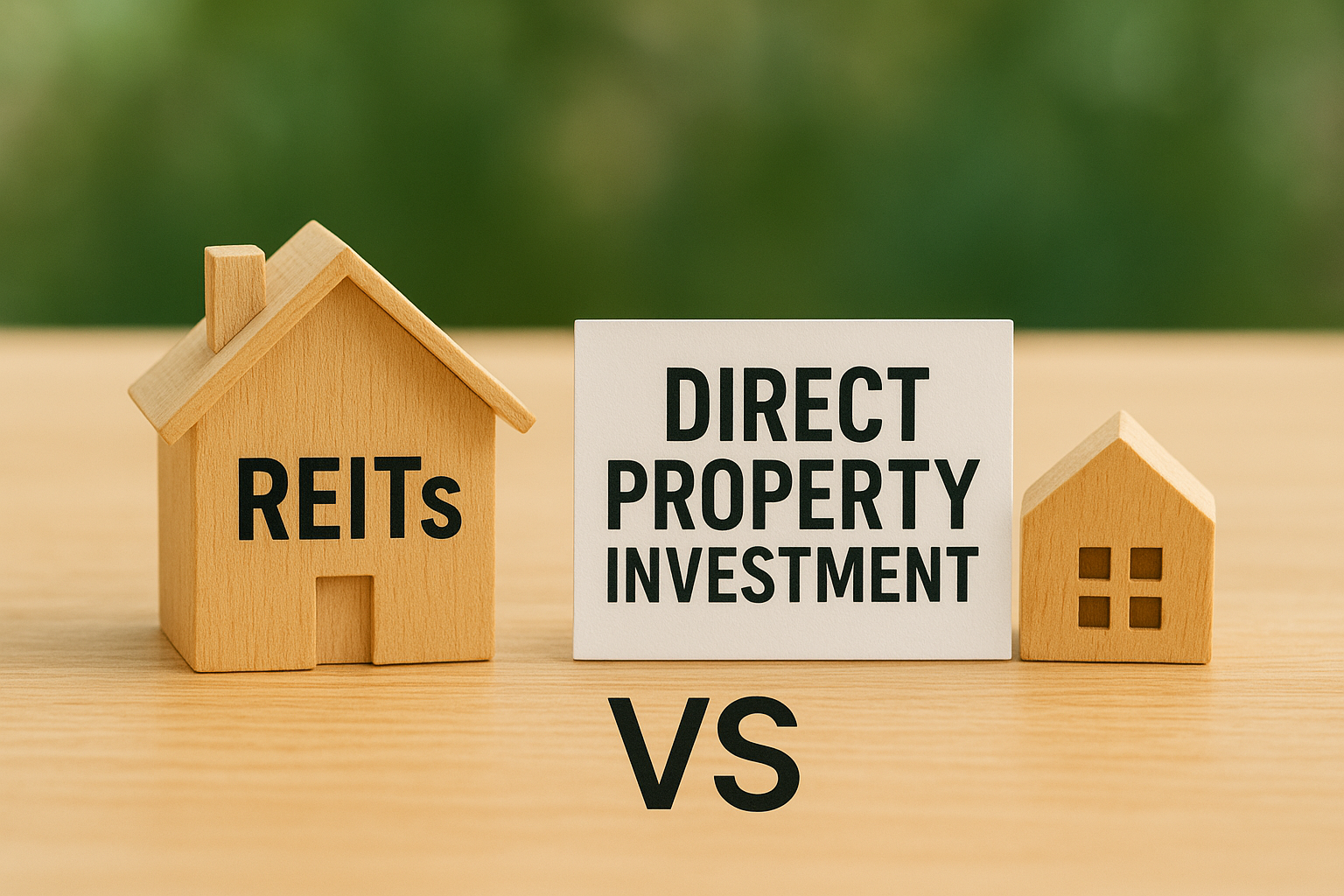Real estate has long been considered one of the safest and most rewarding investment options. But with the rise of financial innovation, investors today can choose between two major paths — Real Estate Investment Trusts (REITs) and Direct Property Investment. Both offer unique advantages and drawbacks depending on your financial goals, risk tolerance, and liquidity needs.
What Are REITs?
A Real Estate Investment Trust (REIT) is a company that owns, operates, or finances income-generating properties. When you invest in a REIT, you’re essentially buying shares of large-scale real estate portfolios — including commercial buildings, offices, or retail spaces — without actually owning physical property.
REITs are listed on major stock exchanges, allowing investors to buy and sell units easily, much like trading stocks. They are ideal for those who want exposure to real estate returns but prefer a more hands-off investment model.
What Is Direct Property Investment?
Direct property investment involves purchasing physical real estate — whether it’s residential, commercial, or land — and managing it personally or through a third party. This traditional approach allows investors to have full control over the asset, benefit from capital appreciation, and earn rental income directly.
Investing in Properties in Bangalore, for example, gives you tangible ownership in one of India’s fastest-growing real estate markets. With demand driven by IT growth, infrastructure expansion, and strong rental yields, Bangalore continues to be a preferred city for long-term real estate investors.
Pros and Cons of REITs
Pros
- Liquidity: Easy to buy or sell, unlike physical property.
- Low Entry Cost: You can start investing with smaller amounts.
- Diversification: Exposure to multiple property types and locations.
- Regular Income: Many REITs distribute dividends regularly.
Cons
- Market Volatility: REITs are subject to stock market fluctuations.
- Limited Control: Investors can’t manage or influence individual properties.
- Tax Implications: Dividend income is taxable, which can impact net returns.
Pros and Cons of Direct Property Investment
Pros
- Tangible Ownership: You have full control and direct equity in the property.
- Capital Appreciation: Strong potential for value growth over time.
- Rental Income: Offers a consistent cash flow stream.
- Tax Benefits: Deduction on loan interest, depreciation, and maintenance.
Cons
- High Entry Cost: Requires significant capital upfront.
- Low Liquidity: Selling a property takes time and involves legal steps.
- Management Hassles: Requires effort in maintenance, tenant management, and documentation.
- Market Risk: Property value depends on location and demand.
Which Option Should You Choose?
If you prefer a low-effort, diversified, and liquid approach, REITs might suit you better. They’re ideal for investors looking for consistent income and exposure to real estate without operational stress.
However, if you value control, long-term appreciation, and direct ownership, traditional property investment offers a more personalized route. It allows you to build wealth through tangible assets that can be used, leased, or sold as needed.
Conclusion
Both REITs and direct real estate investments play important roles in a well-balanced portfolio. A blended strategy — combining REIT exposure for liquidity and physical properties for capital growth — can help investors enjoy the best of both worlds.
Ultimately, your decision should align with your financial goals, available capital, and risk appetite. Whether you invest through the stock market or own real estate directly, the key lies in research, diversification, and a long-term perspective.




